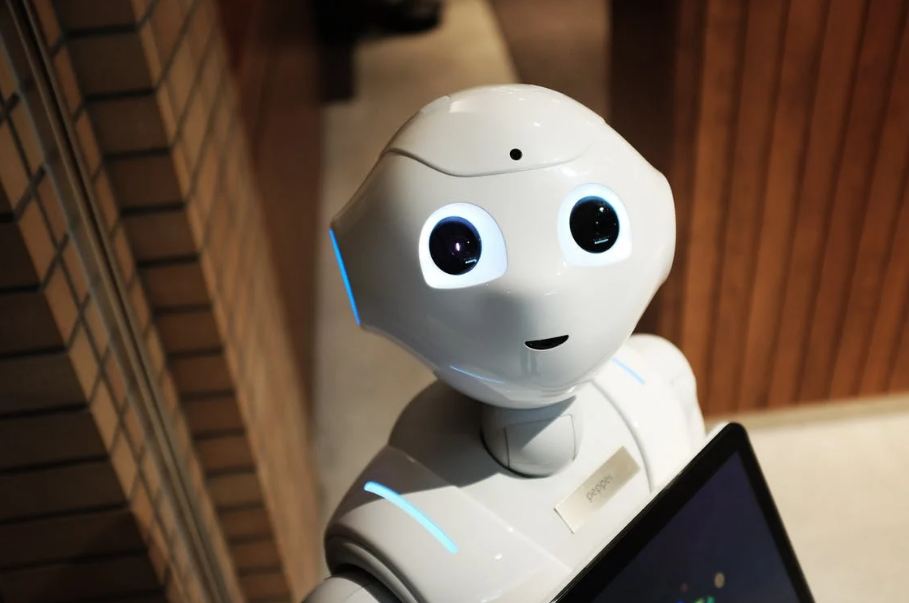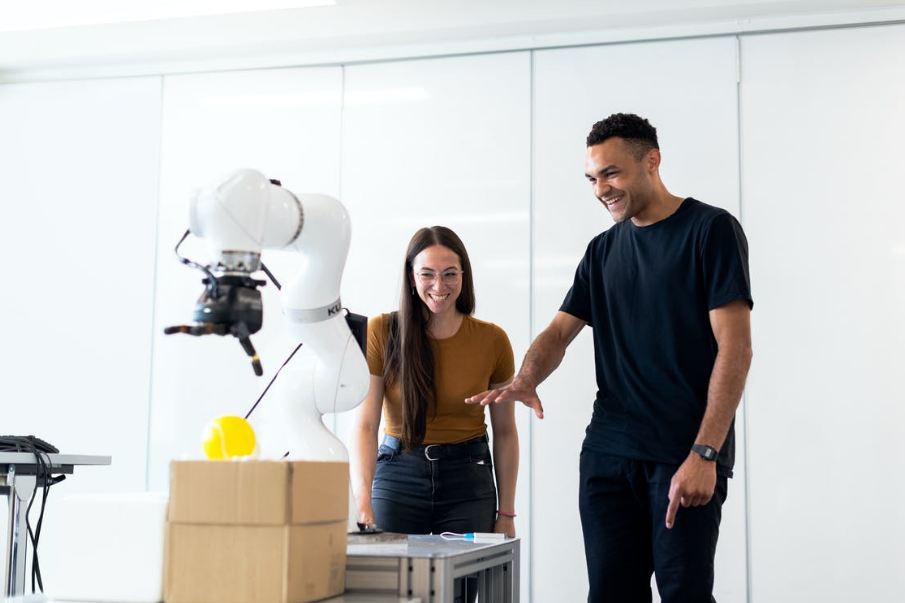Over the past 20 years, we have introduced many innovations and various technological elements that help us deliver our products quickly and reliably to meet the growing needs and expectations of our customers. Amazon Robotics is one of them. This intelligent transport system automatically moves the entire shelf within minutes throughout the day.
Today, Amazon’s warehouse network employs more than 200,000 mobile robots and hundreds of thousands of employees. This family of robots has helped the company promise fast delivery to Amazon Prime customers.
Robotics can be used: everything you need to know about robotics from beginners to experts, learn the basics of RoboCORE software, and learn how to build a brain for robot-like creatures that avoid obstacles. You will also learn about the materials you will use to build the robot’s body and the sensors your new friends will need to discover the world around you. This book even explains how to build an autonomous wall-climbing robot!
Do not wait start reading robotics now here in this article we have everything you would want to know about robotics and robots, from beginners level to experts! We are happy to receive this exciting and powerful information!
Instant Benefit of Robotics for Amazon
Robots make the job of employees easier
All products are mobile thanks to robotics. Goods are delivered directly to the workstation by the robot to receive orders from customers. The goods are then sent to the next station for delivery to the customer. In this regard, humans and machines are already working together on Amazon. This facilitates the work of employees and reduces the extra time spent walking.
Robotics Can Help You Process Orders Faster
Robotics can help you process orders faster and support more product selections for your customers. Robots can store more storage, so the center can be simplified to increase capacity. Not only does this technology support a wide range of products, it allows us to fulfill orders on a larger scale than ever before. In some cases, orders can be processed in minutes rather than hours.
Robots Do Not Replace Workers
Since launching Amazon Robotics at the fulfillment center in 2012, it has created approximately 300,000 Amazon jobs worldwide. Smart systems support employees’ work. We constantly invest in new logistics centers and jobs.
Need of Robots
Amazon needs this robotic system to speed up fulfillment of orders and make same-day deliveries more prevalent. However, the results are striking in the nature of the modern workforce. Humans and robots are united into a cohesive workforce that promises to utilize the unique technologies of both sides. This leads to the familiar worries (even existential mysteries) that as robots evolve further they will inevitably move more people from work. Companies like IBM have already realized the impact robots could have, which is why you see IBM Watson in the state it is in today – mature, intelligent, and super nice. We expect Amazon’s robots to offer something similar to say the least, if not something advanced.
If only the Luddites can see you complete your online order now. This layer color is somehow the robot’s monument. This isn’t one of Amazon’s fulfillment centers where people take everything from their orders and pack them into boxes. This is a sorting company that takes all these boxes and sends them to a nearby truck. Important difference: this squat wheel driver is not designed to properly handle shampoo, books and t-shirts. They are wolves.
A cloud-based system, similar to air traffic control, coordinates the path of each robot across the floor with respect to the potential for interference from other machines in different paths. This coordinate system also determines when the robot should be off the side and connected to the charger and when it should return to work. Routing can be a lot more difficult because densely populated zip codes have more than one image, so the system must take into account traffic patterns when deciding which gateway the robot should visit.
What Robots do at Amazon?
Amazon fulfillment centers are always crowded with packages and people. In centers with robotics, workers now get up and walk less. The robot collects heavy objects for transport or storage. Employees who help lift customers’ orders can easily identify items instead of looking for them on a shelf.
Products are now delivered directly to employees. It’s great for employees to focus on what needs to be audited. For example, people can look at stools with maple syrup and find the best way to unpack them. Robots cannot easily determine what liquid is in the container or if it is being poured into the packaging. People can easily figure out what they are unpacking and then find a way to unpack it safely without damage.
Heavy Weight Lifting
There are currently many types of robots “in use” in the Amazon Compliance Center. A pallet is a robotic handler with a gripper that identifies and attaches a conveyor belt container and places it on a pallet for transport or loading. Another type of robotic arm, a robotic pile, is driven to lift storage pallets to another level at the filling center or transport them to the next destination. This device is a robot that transports packages as objects. Amazon currently has 100,000 units worldwide and has 6 robot stackers and 30 balers.
Leading
Amazon began using robotics after acquiring Kiva Systems in Boston in 2012 and later renamed it Amazon Robotics. It was Amazon’s second largest acquisition at the time, and it strongly demonstrated the company’s intention to lead the way in a collaborative and automated environment involving humans and robots. The robotics family at Amazon now includes Pegasus, Kiva, Xanthus, and more.
Since the acquisition, the team of robotics and engineers worked closely with partners to introduce new technologies that streamline processes, improve security, and improve efficiency. Employees play an important role in shaping the future of the company. With all that’s going on right now, it’s safe to say that Amazon has officially joined the robotics revolution. It’s also said that the company plans to release a successor of its all-famous Pegasus robot. The new version was presented back in June 2019 at the Amazon MARS conference.
Like Pegasus, the new robot also carries pods, but it comes with the option to use multiple different attachments. Plus, it has less parts, is sleeker, and costs 50% less than Amazon’s initial Kiva. And the fact that it has less parts means it’s also easier to keep and maintain. The name of this robot is expected to be Xanthus. It’s layout is expected to be as follows: the center will have the base unit, while the x-drive units are going to be at the right and left of the robot, just like on the X-Sort drive variant of Pegasus used to organize parcels in varying chutes.
The company also stated that it’s planning to set up an Amazon Robotics innovation hub in Westborough, Mass and plans to invest nearly $40 million in the new venture. For what it’s worth, Massachusetts is already a base for more than 150 robotic firms. The new innovation hub is expected to be a world-class facility where the company’s existing teams can program, create, and deliver their robots in the same roof. Plus, it’s said to open up nearly 200 advanced manufacturing and technology roles in the state.
The new facility will span nearly 350,000 square feet and is going to feature R&D labs, manufacturing space, and corporate offices. It’s going to be separate from the current Amazon Robotics site that’s present in North Reading, Massachusetts.
Conclusion
Humans have to adapt to machines just as machines have to adapt to us. Our career depends on it. Amazon launches simulations to find out how to ensure employee convenience when loading robots in batches. This includes the range of motion in terms of ergonomics and safety.
Or I have a question like the best way for a person to take a package, scan it, install it, and then press a button to send the robot. “There is an infinite state between what robots do and what humans do,” said Brad Porter, vice president of robotics at Amazon.
It’s a kind of dynamic environment perfect for developing the next iteration of Amazon’s systems. Instead of using a conveyor belt, the company is developing a new modular robot called Xanthus that includes a variety of accessories, including fixing containers.
This machine fills the gap between a fulfillment center where people manually load products into boxes and a sorting center that mostly works with assembled boxes.



